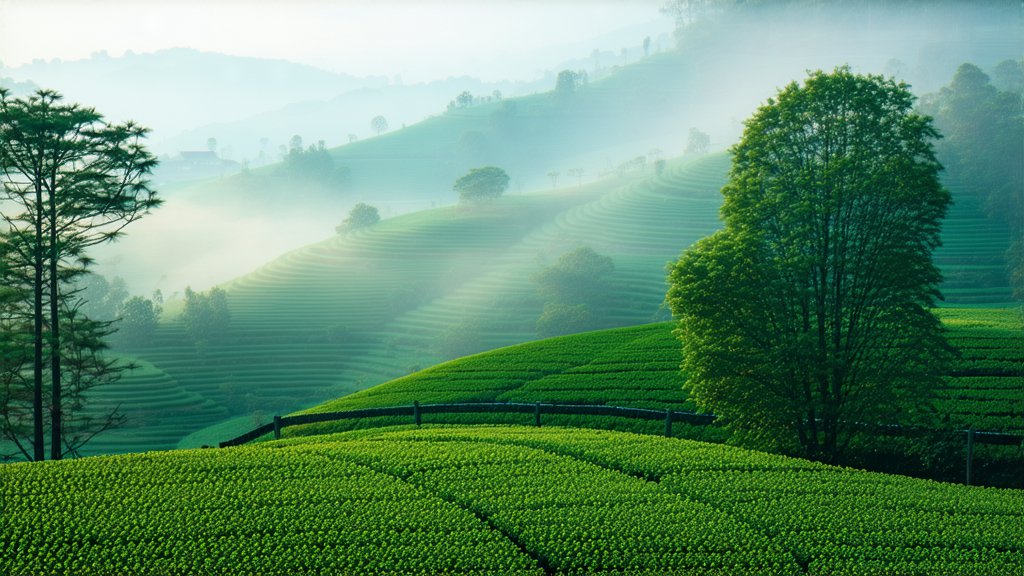
Nestled amidst the lush landscapes of China’s Hunan province lies a gem within the vast tapestry of Chinese tea culture – Junshan Yinzhen, a distinguished variety of Yellow Tea that has been captivating tea enthusiasts for centuries. This article embarks on a journey through time to uncover the rich history, diverse varieties, intricate production process, and nuanced art of appreciating Junshan Yinzhen, inviting international readers to savor the essence of this golden delicacy.
A Historical Brew: Tracing the Roots of Junshan Yinzhen
The tale of Junshan Yinzhen begins in the misty mountains of Junshan Island, an idyllic haven situated in Dongting Lake. Its origins can be traced back to the Tang Dynasty (618-907 AD), where it was initially revered as a tribute tea offered to imperial courts. Over the centuries, its reputation grew, becoming synonymous with quality and refinement. The name "Yinzhen," meaning "silver needle," aptly describes the delicate, needle-like appearance of the tea leaves, which are carefully selected from the tender buds and young leaves of the Camellia sinensis plant.
Varieties of Junshan Yinzhen: A Symphony of Flavors
Junshan Yinzhen encompasses several grades, each representing a different level of craftsmanship and flavor profile. At the pinnacle is the Supreme Grade, characterized by its pristine white downy tips and minimal stem content, offering a taste experience that is both subtle and complex. Following closely is the First Grade, which includes slightly more mature leaves and stems, imparting a fuller body and richer aroma. Lower grades incorporate even more stem material, resulting in a stronger, more robust brew. Each grade reflects the philosophy that every part of the tea plant holds value, contributing to the overall harmony and depth of flavor.
The Alchemy of Creation: Crafting Junshan Yinzhen
The transformation of fresh leaves into Junshan Yinzhen is a meticulous process that embodies the essence of traditional Chinese tea-making artistry. It all begins with the careful handpicking of only the finest buds and leaves during the early spring harvest, when they are most succulent and nutrient-rich. These precious pickings undergo a series of specialized steps:
-
Withering: The freshly picked leaves are spread thinly on bamboo mats under the warm sun or in well-ventilated rooms, allowing them to lose moisture gradually while preserving their natural green hue.
-
Fixation (Shaqing): Unlike the high-temperature fixation used in green tea production, Junshan Yinzhen employs a gentler approach. The withered leaves are lightly pan-fried or steamed to halt enzymatic activity partially, setting the stage for the unique yellowing process.
-
Yellowing: This crucial step involves wrapping the fixed leaves in cloth or paper bundles and storing them in a controlled environment. Through a combination of heat and humidity control, the leaves slowly oxidize, turning a soft yellow color and developing their distinctive sweetness and mellowness.
-
Drying: Finally, the yellowed leaves are subjected to a final drying phase, either through sun exposure or low-temperature baking, ensuring they reach the optimal moisture content for storage and longevity.
The Art of Appreciation: Savoring Junshan Yinzhen
To truly appreciate Junshan Yinzhen is to engage in a sensory ritual that transcends mere consumption. Here’s a guide to unlocking its full potential:
-
Warm the Teaware: Begin by rinsing your teapot and cups with hot water to enhance the tea’s aroma and maintain its temperature.
-
Measurements Matter: Use approximately 3 grams of Junshan Yinzhen per 150ml of water for a balanced infusion. Adjust according to personal preference.
-
Water Quality & Temperature: Opt for soft, mineral-rich water heated to around 80-85°C (176-185°F). Boiling water may scorch the delicate leaves.
-
Steeping Time: Infuse the leaves for about 1-2 minutes for the first brew, gradually increasing the steeping time for subsequent infusions. Junshan Yinzhen is known for its resilience, allowing multiple steepings without losing flavor.
-
Observation & Aroma: As the leaves unfurl gracefully in the water, observe their transformation and take in the subtle, floral fragrance that fills the air.
-
Tasting: Sip slowly, allowing the tea to coat your palate fully. Note the initial sweetness, followed by a gentle astringency and a lingering aftertaste that speaks of its mountain origins.
In conclusion, Junshan Yinzhen stands as a testament to China’s profound connection with nature and its mastery in transforming simple ingredients into extraordinary experiences. From its storied past to its meticulous present, this yellow tea invites us to slow down, savor life’s subtleties, and find solace in each cup. As you embark on your own exploration of Junshan Yinzhen, let it be a bridge connecting you to centuries-old traditions and the enduring spirit of Chinese tea culture.
Keywords: Junshan Yinzhen, Yellow Tea, Chinese Tea Culture, Huangcha, Tea Tasting